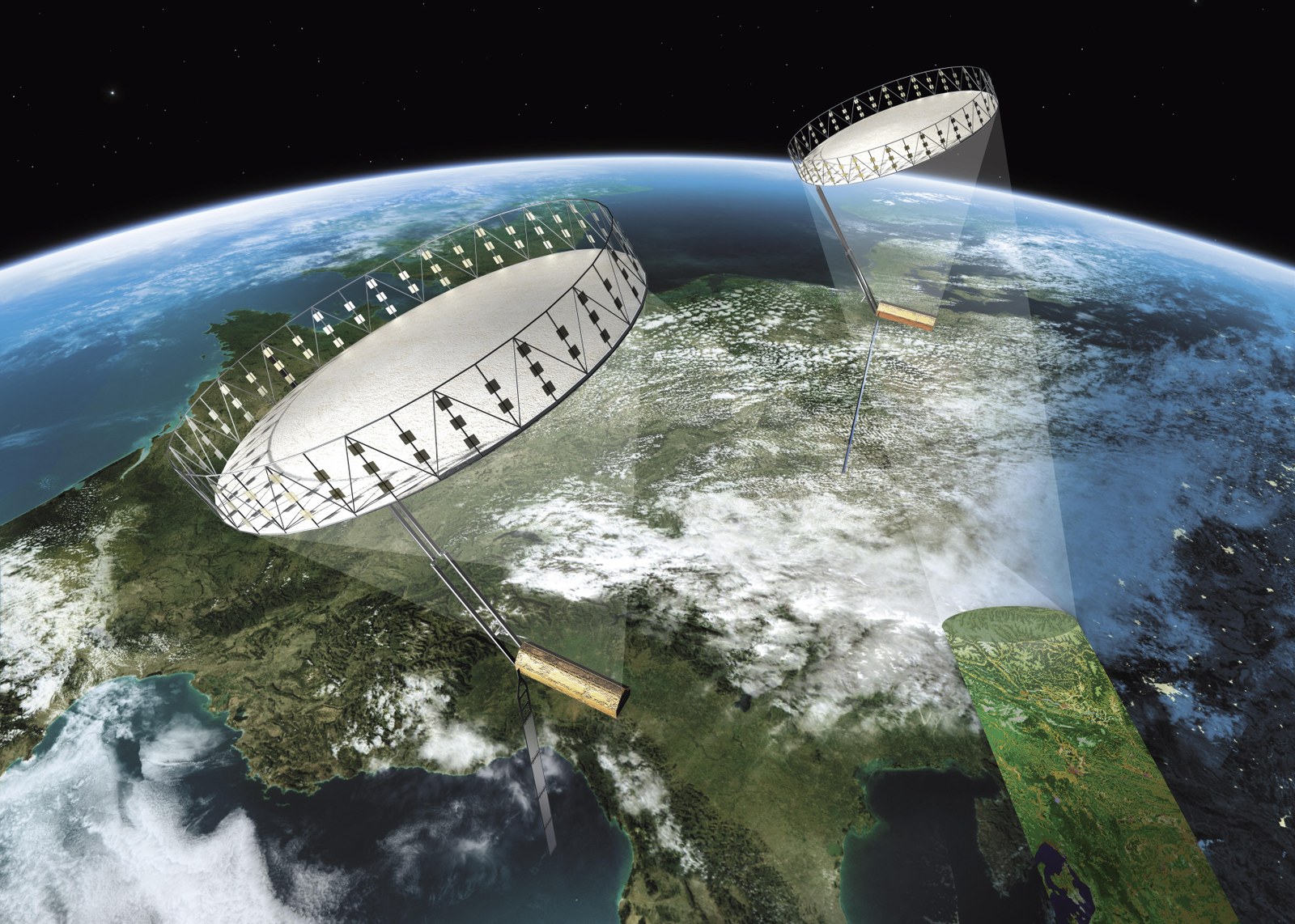Research aircraft, uncrewed flight, experiments for the Space Station and an Antarctic greenhouse


- Four research aircraft, two helicopters and test machines for uncrewed flight
- Earth observation missions for climate research – Tandem-L and MERLIN
- Exploration of Mercury, Mars and asteroid Ryugu
- Focus: Aeronautics, space, digitalisation
The German Aerospace Center (Deutsches Zentrum für Luft- und Raumfahrt; DLR) will present its latest projects and research results at the ILA Berlin Air Show from 25 to 29 April 2018. Again one of the largest institutional exhibitors in 2018, DLR will provide fascinating insights into its current research on an approximately 700-square-metre stand in Hall 4, in the Space Pavilion, on the stand of the Federal Ministry for Economic Affairs and Energy (BMWi) in Hall 2, and at the ILA CareerCenter in Hall 1. DLR will also use the outdoor area at ILA to showcase a large part of its research fleet – with various helicopters and aircraft – including its largest fleet member, the A320 ATRA, as well as a variety of experimental aircraft for uncrewed flight.
"At ILA Berlin 2018, the leading trade fair for innovations in the aerospace industry, DLR is presenting forward-looking topics that provide solutions to the most urgent challenges facing society, such as climate change, digitalisation and Industry 4.0 – using the innovative power of the aerospace industry," explains Pascale Ehrenfreund, Chair of the DLR Executive Board. "ILA is the ideal venue for this, and the increased focus on science and research offers DLR excellent opportunities to maintain and continue expanding its wide network of international collaborations with the scientific and business communities."
DLR will report daily from ILA on Twitter and Facebook. The two DLR press conferences (25 April at 10:00 and 26 April at 10:00) will be broadcast live on the social media platform Youtube - DLR.
DLR research aircraft at ILA
As the operator of Europe's largest fleet of civilian research aircraft, DLR will use the outdoor area at ILA to exhibit four research aircraft and two research helicopters. Acting as test platforms, the highly modified aircraft are themselves the subject of aviation research or are used as platforms for scientific research. Their applications extend from the testing of new aeronautics technologies through Earth and ocean observation to atmospheric research. DLR will showcase the largest member of its fleet, the Advanced Technology Research Aircraft – an

https://youtu.be/6TsvMtvPVMI
Your consent to the storage of data ('cookies') is required for the playback of this video on Youtube.com. You can view and change your current data storage settings at any time under privacy.

https://youtu.be/Jx5npn5PMZI
Your consent to the storage of data ('cookies') is required for the playback of this video on Youtube.com. You can view and change your current data storage settings at any time under privacy.
Uncrewed flight, alternative fuels and low-noise landing approaches
DLR will present numerous innovative exhibits for the future of aviation at its stand in Hall 4. They include developments for the uncrewed transport of air cargo such as the UFO (Unmanned Freight Operations) project, in which DLR has developed solutions for the integration of these aircraft into current air traffic systems. Alternative fuels like those recently analysed in a joint research campaign conducted by DLR and NASA offer significant potential for more environment friendly air transport. Visitors to the DLR stand can see an original instrument rack used in the flight campaign and will be able to witness a live demonstration of burning standard kerosene, with its significantly higher soot emissions, compared to a synthetically optimised fuel. DLR researchers have developed the Low Noise Augmentation System (LNAS), which provides pilots with assistance in order to reduce the in-flight noise produced by aircraft. Visitors to the stand will have ample opportunity to ask questions about the necessary adjustments and control settings with which the system ensures noise-optimised landing approaches, as have already been tested at Frankfurt Airport. In addition, the stand will also feature a model showing research into a quiet engine with noise reduction based on active noise control using compressed air injection.
A climate satellite, a humanoid robot and an asteroid lander
DLR will also showcase its research in the fields of Earth observation, suborbital hypersonic transport and space exploration at its stand in Hall 4. The innovative Tandem-L concept for global, radar-based environmental and climate monitoring will be presented to visitors alongside the Franco-German Methane Remote Sensing Lidar Mission (MERLIN), which is designed for the global mapping of the greenhouse gas methane. Also on show will be a model of the SpaceLiner, a visionary concept for a suborbital, hypersonic fixed-wing passenger aircraft that can also be modified to be used as an uncrewed, reusable launch vehicle for the cost-effective launching of satellites into orbit. The humanoid robot TORO will demonstrate its mobility to visitors. DLR will also join with its partners from the Japanese and French space agencies, the Japan Aerospace Exploration Agency (JAXA) and the Centre national d'études spatiales (CNES), to present the asteroid mission Hayabusa 2 with a 1:1 model of the spacecraft and the Mobile Asteroid Surface Scout (MASCOT) lander that it is carrying. MASCOT will touch down on the Ryugu asteroid in October 2018 and then 'hop' across its surface. At the stand of the Federal Ministry for Economic Affairs and Energy (Bundesministerium für Wirtschaft und Energie; BMWi), DLR will show a model of an experimental space surveillance radar, the German Experimental Space Surveillance and Tracking Radar (GESTRA). In future, this system will be able to identify and catalogue debris and other objects in space. In addition, the DLR exhibition at the ILA CareerCenter will offer young scientists the unique experience of a virtual spacewalk along the outer shell of the International Space Station (ISS).
A hands-on experience in the ILA Space Pavilion
DLR will present more than 20 topics in the Space Pavilion, which is also in Hall 4. The immense range of space themes on show demonstrates the diversity of scientific and research projects on the operation and infrastructure of space applications, while also testifying to the support of industry and the German contribution to the European Space Agency (ESA). Visitors can learn how space makes a clear contribution to improving the quality of life on Earth, for instance in the essential work of Earth observation satellites like the Environmental Mapping and Analysis Programme (EnMAP) in the area of environmental and climate protection. They will also see why and how space derives new knowledge from missions like the 'extended ROentgen Survey with an Imaging Telescope Array' (eROSITA). Scheduled for launch on 6 June 2018, the 'horizons' mission of German ESA astronaut Alexander Gerst is exemplary of these and similar benefits. DLR will use its exhibition in the Space Pavilion to provide information about the mission and its scheduled experiments, including the astronaut assistant CIMON. Designed to investigate the possibility of deploying robotic swarms to explore planets and oceans, the space robots from the ARCHES project are certain to impress visitors, as will the exhibition about the Antarctic greenhouse EDEN ISS, which is currently in Antarctica to cultivate food, the gained knowledge of which will supply future missions to the Moon and Mars with fresh produce. DLR's Berlin-based planetary researchers are presenting their BepiColombo Laser Altimeter (BELA) and MErcury Radiometer and Thermal infrared Imaging Spectrometer (MERTIS) experiments, which will be carried as part of the instrument payload on the European/Japanese BepiColombo mission to Mercury, as well as the 'Heat Flow and Physical Properties Package' (HP3), which will set off for the Red Planet as part of NASA's InSight mission. The partners at the Space Pavilion are DLR, ESA, the German Aerospace Industries Association (Bundesverband der Deutschen Luft- und Raumfahrtindustrie; BDLI) and BMWi. The ILA Space Day will take place in the Space Pavilion on 25 and 26 April 2018, and will feature numerous talks and discussions. ILA Astronaut's Day on 27 April 2018 is open to the public. The panel will include the German astronauts Hans Schlegel and Ulrich Walter, as well as their US colleagues Tom Henricks, Jerry Ross and Bernard A. Harris, who worked together 25 years ago – in 1993 – during the German D2 mission. DLR will also stage a Science Show for visitors of all ages in the Space Pavilion between 13:00 and 15:00 on 28 April 2018. Among the guests will be the German ESA astronaut Matthias Maurer.

